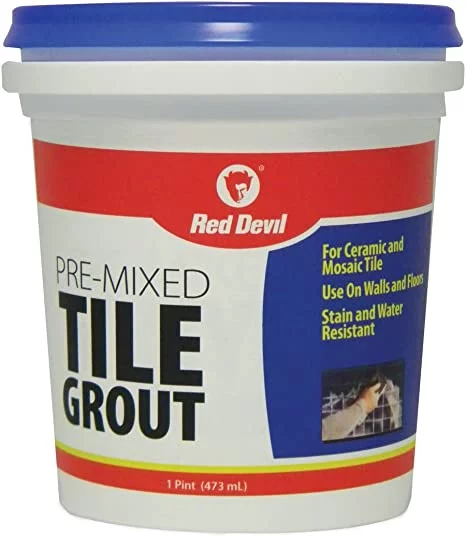If you’re just starting off with tile, you’ll hear this term a lot. So, what exactly is grout? Why do you require it? Is there a correct and incorrect way to use them? We will teach you everything you need to know in this blog.
WHAT IS GROUT?
When placing tiles on walls or floors, an adhesive / mortar mix is required. The area between the tiles must be filled once it has dried and become secure. This is where grout comes into play. It is a dense fluid that is used to connect and seal the joints between tiles in order to create a seamless appearance.
Grout has the extra benefit of making things appear nice after it’s been applied. When used, a compressible joint is formed to relieve minor stresses within the installation (this is not to be confused with movement joints, which are still necessary) and to offer a clean transition between neighboring tiles to meet manufacturing tolerances within tiles.
WHY YOU NEED IT
Grout is an essential component of many tile projects. It keeps moisture out of the substrate, keeps tile lines straight, and keeps tiles from rubbing together and cracking.
Any job that isn’t grouted isn’t likely to last, so while you can technically avoid grouting if you’re in a dry environment with less than 0.0025″ of spacing between tiles, we strongly advise you to use it regardless. The application process may be time-consuming, but the benefits far exceed the drawbacks. Grout prevents cracking, uneven tiling, and debris accumulation between the tiles.
CHOOSING THE RIGHT ONE
You now understand what grout is and why it is necessary; which one do you use? There are numerous options. Knowing which one to use is critical for a proper tile installation, and it all begins with measuring the space between the tiles. Sanded grout should be used if the gap is more than 1/8th of an inch. Unsanded choices will shrink as they cure and will not entirely fill the joint.
If the gap between the tiles is less than 1/8th of an inch, you can fill the tile joints with un-sanded, acrylic latex, or epoxy alternatives.
SANDED
Sanded grout is used for big joints that are 1/8″ or larger. The sand in the material helps it stay in the joints and should be blended to the consistency of peanut butter. After curing, it will have a sand-like texture. Remove any extra grout from the surface before it dries completely.
When working with marble tiles, never use sanded grout. The stone will be scratched by the sand. Use one of the other options accessible to you instead.
UN-SANDED
Unsanded grout is utilized for minor joints that are 1/8″ or less in diameter. Using sanded material in smaller joints will result in an excess of sand and insufficient grout. Unsanded choices may necessitate more pressure to push into the smaller joints. It is critical to completely fill the joints, or your grout may collapse. Unsanded grout should be blended to a peanut butter consistency and not allowed to cure on the tile’s surface.
EPOXY
Epoxy grout differs greatly from the other varieties we’ve discussed. This material is non-porous and does not require sealing. It also inhibits the growth of microorganisms and is less likely to crack over time.
Epoxy is perfect for countertops, outdoor patios, pool decks, and pool tiling below the waterline. It is also far more expensive than typical solutions and has a relatively short ‘open time’ (i.e., the time you have to work with the material before it becomes too hard to use). The open period varies depending on the manufacturer; before mixing your epoxy grout, find out how much open time it has.
Now that you know everything there is to know about grout, please share this blog with your friends and coworkers, and stay tuned for our next post for additional tile installation tips and tricks.
To know the pricelist of grout, Tile Grout Guaranteed Best Construction Material Philippines’ Prices
To know other construction guides, tips, and methodology for beginners, veterans, and contractors, please see here.
To know the flood prone areas in the Philippines, Top 10 Flood-Prone Areas to Live in the Philippines.
To know more about Concrete Hollow Blocks, Simple Reasons Why Hollow Blocks are Highly Used in the Philippines
To know more about Hammers and Nails, Tips for Guaranteed Best Technique for Hammering Nails
To know more about Tees and Wyes, What is the Guaranteed Best to Use: Sanitary Tee Vs Wye

